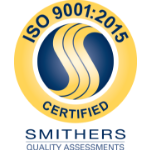Case Studies

St. Louis Lambert Airport Air Handling
At St Louis Lambert Airport being green is a core objective. Lambert-St. Louis International Airport is the primary commercial air service transportation hub for the greater St. Louis metropolitan area serving nearly 13 million passengers annually. The airport is owned and operated by the city of St. Louis and employs approximately 4,500 people through airlines, tenants, vendors and the municipality. The airport is one of the top economic engines in the St. Louis region and the state of Missouri with impact on aviation, manufacturing, tourism and other key segments of the economy.
The airport continued to improve the overall electrical and natural gas energy demand through the upgrade of four air handling units in Terminal 1 with more efficient Air Enterprises units to reduce utility costs by approximately $200,000 per year. Airport Engineering won an award from the St. Louis Chapter of the American Society of Heating, Refrigerating, and Air Conditioning Engineers (ASHRAE) for this air handling replacement project.
“The Airport is committed to integrate economic, social, and environmental aspects into new projects, existing operations and management strategies while providing a quality service to the greater St. Louis area.” Rhonda Hamm-Niebruegge, Director of Airports
Lambert-St. Louis International Airport was also awarded a Circle of Excellence Award of Merit in the 2012 St. Louis RCGA Green Business Challenge, which promotes sustainability strategies in the region. Lambert was a first year participant and one of a few organizations honored with the greatest gain in new sustainable practices or strategies over the duration of the six month competition. The Green Business Challenge was sponsored by the St. Louis Regional Chamber and Growth Association.
This international airport client needed to renovate its existing HVAC mechanical systems with minimal interruption to the public it served. Access to the existing spaces was very constrained. By splitting the lower CFM units into small, multiple shipping pieces and by shipping the larger units totally knocked down for field erection in place, Air Enterprises was able to meet these challenging dimensional restrictions. All disciplines (sheet metal, piping and electrical) were turn-keyed, coordinated and supplied by Air Enterprises. The SiteBilt® units were built up directly off of the existing concrete pads. In order to minimize disruptions to the airport’s operations, much of the labor was provided between 6 PM to 6 AM.
Unit components consisted of return air plenum fans, dual parallel supply fans, 30%/85% filtration, steam humidification, steam heating and chilled water coils in a “hot deck/cold deck” design, and zoned dampers. Internal lights and hydronic and steam piping was also designed and provided. All components were contained within Air Enterprises’ all aluminum, double wall housing. Complete field verification and performance testing services, including seismic certification, were provided to assure the end user of a complete and a guaranteed project.

